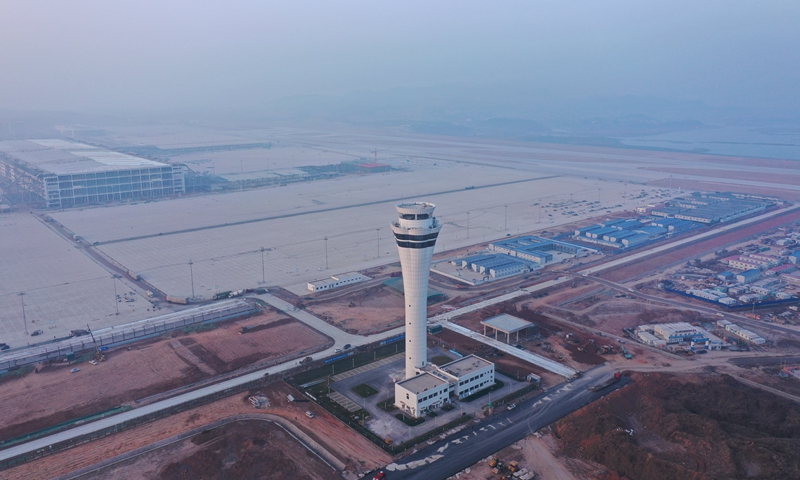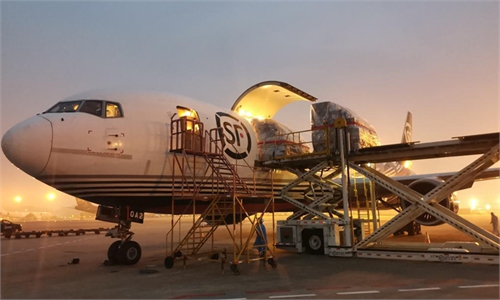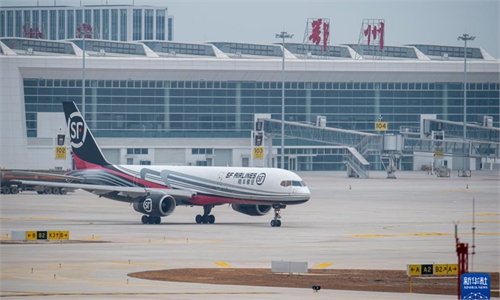
The photo taken on December 29, 2021 shows China's first cargo airport in Ezhou, Central China's Hubei Province. Photo: VCG
China's first cargo airport in Ezhou, Central China's Hubei Province, welcomed its maiden test flight on Saturday.
The airport, with an investment of 32 billion yuan ($5.03 billion), will be able to handle 3.3 million tons of cargo and 1.5 million passenger trips by 2030, according to the National Reform and Development Commission (NDRC).
The Ezhou airport is the country's first cargo airport, with the functional orientation of air freight hub and alternate airport for passenger transport.
The airport is expected to enter trial operations in June this year. It will mainly handle passengers during the day and will focus on cargo aviation at night. By then, the airport's 1.5-hour flight circle will reach China's five major national-level urban hubs, covering 90 percent of the country's total economic output and 80 percent of the population.
Data show that by the end of 2019, there were 235 airports with 1.35 billion passenger trips completed, a year-on-year increase of 6.9 percent. The cargo volume reached 17.1 million tons, an increase of only 2.1 percent year-on-year, which means that China's air freight is in the early stages of development.
Ren Hong, an official from NRDC said that nearly 50 percent of the cargo volume is concentrated in Beijing, Shanghai and Guangzhou. Five major airports in Beijing, Shanghai, Guangzhou, Shenzhen and Zhengzhou concentrated 90 percent of the international freight volume in China.
The Ezhou airport is tailored to meet the booming air freight market which has been boosted by e-commerce and express delivery industries. It will primarily serve express delivery companies, including the industry leader, SF Express, which is also one of the major investors of the project, according to Xinhua News Agency.
China has paid efforts to facilitate air freight capacity in airport construction works. In the 2021-2025 period, the country will keep strengthening the sector in regions with market prospects, according to the NDRC.


